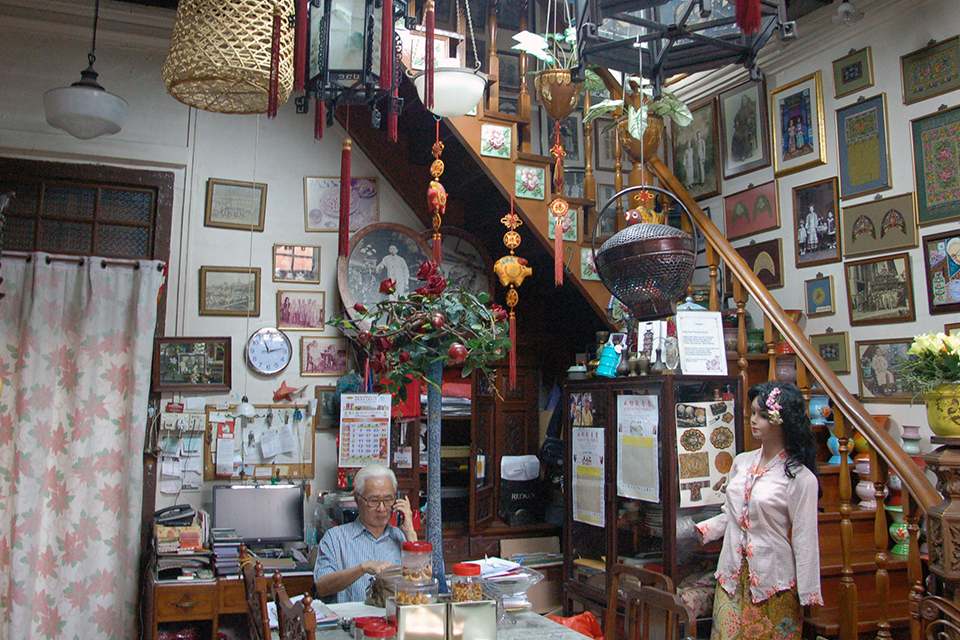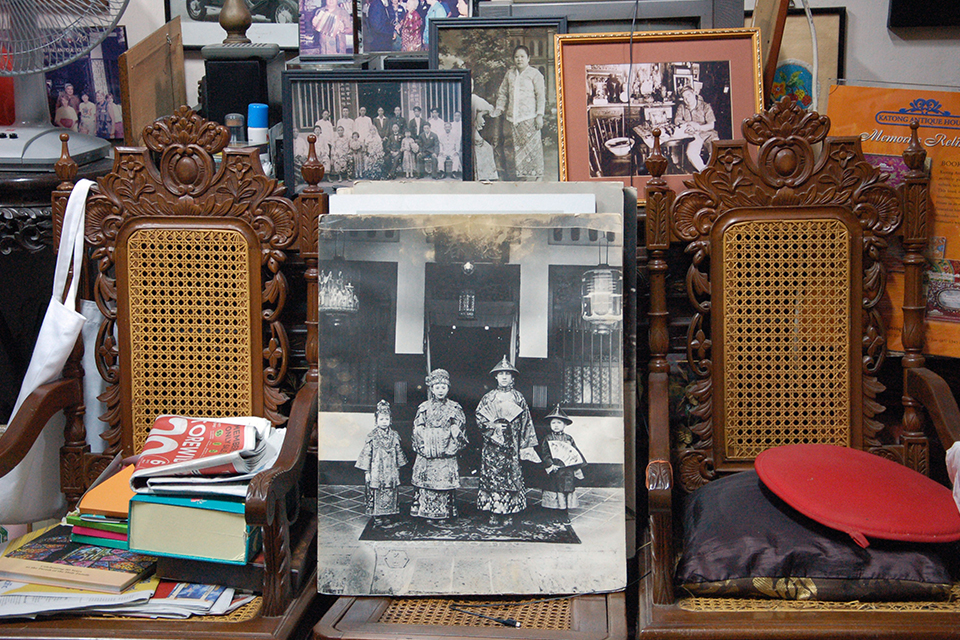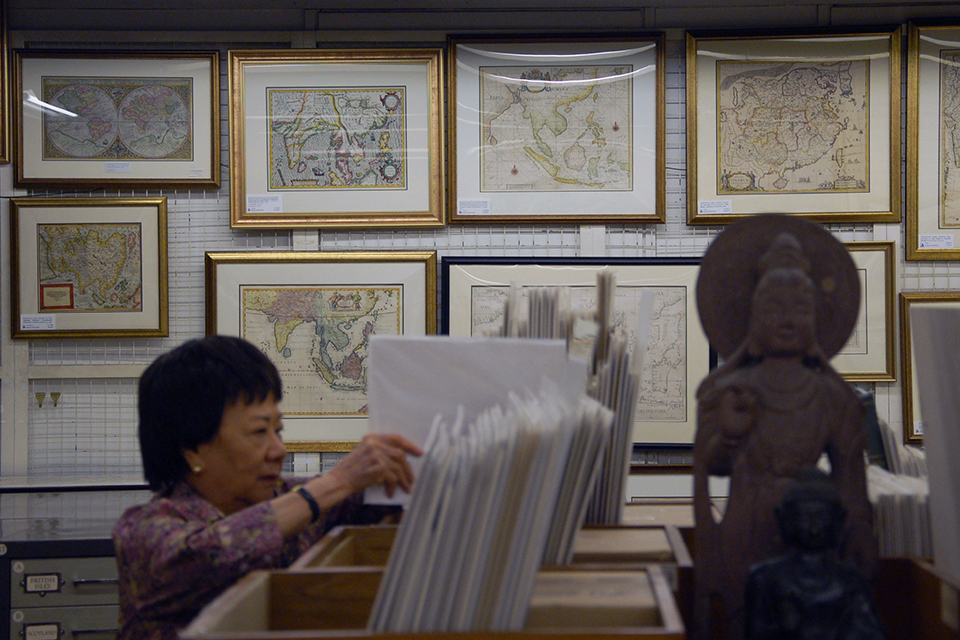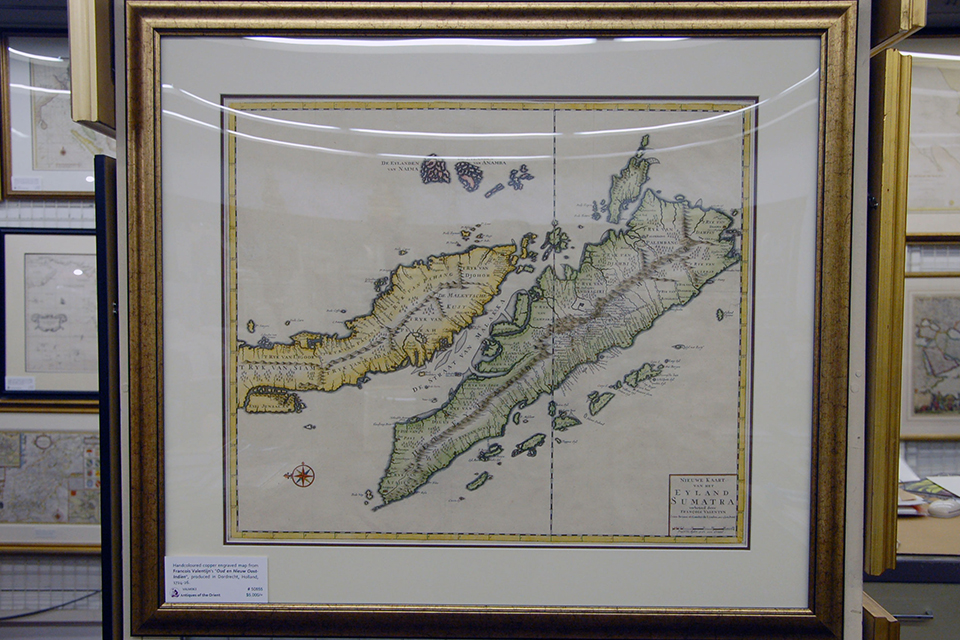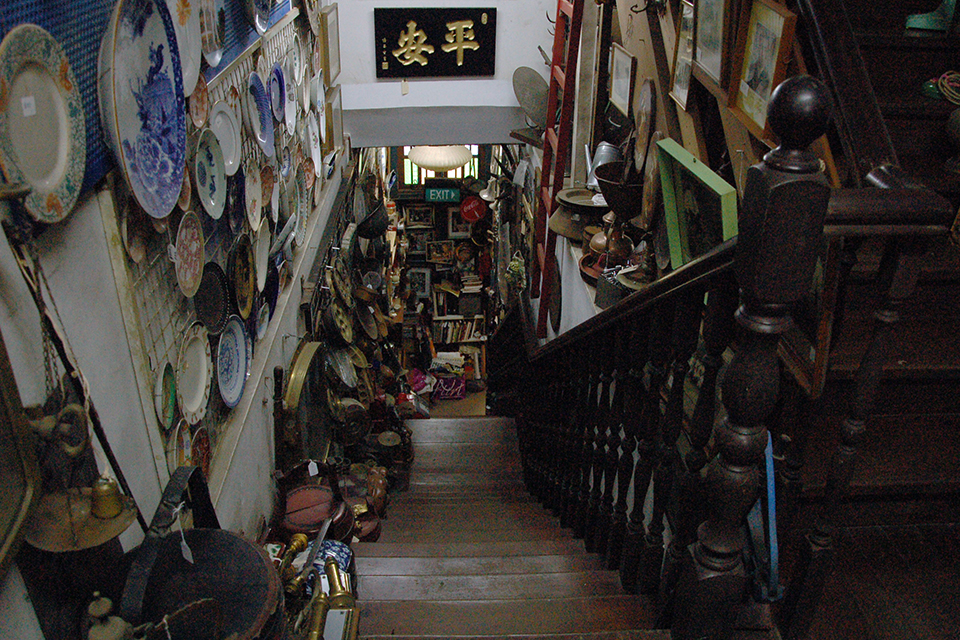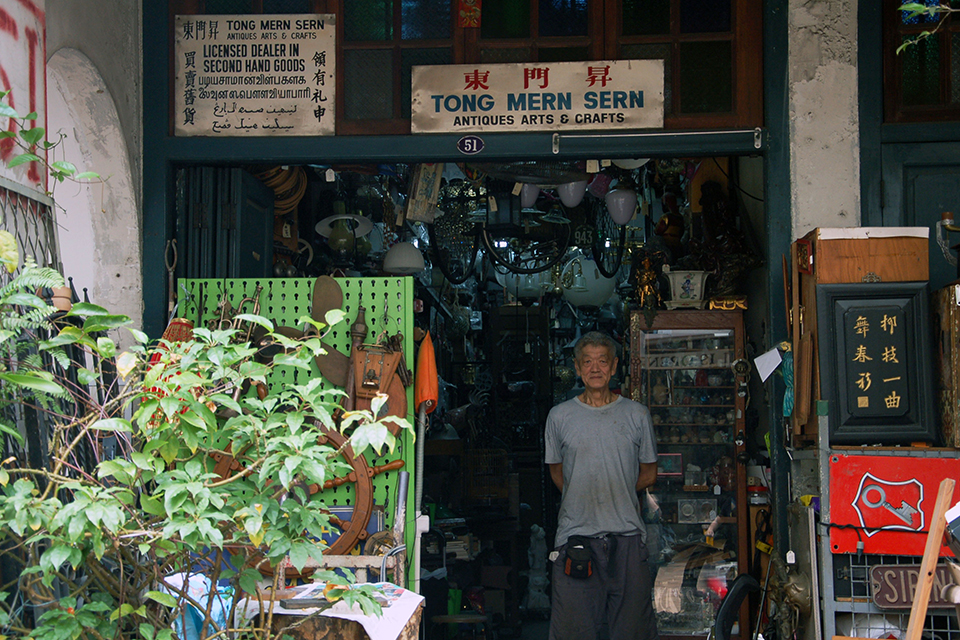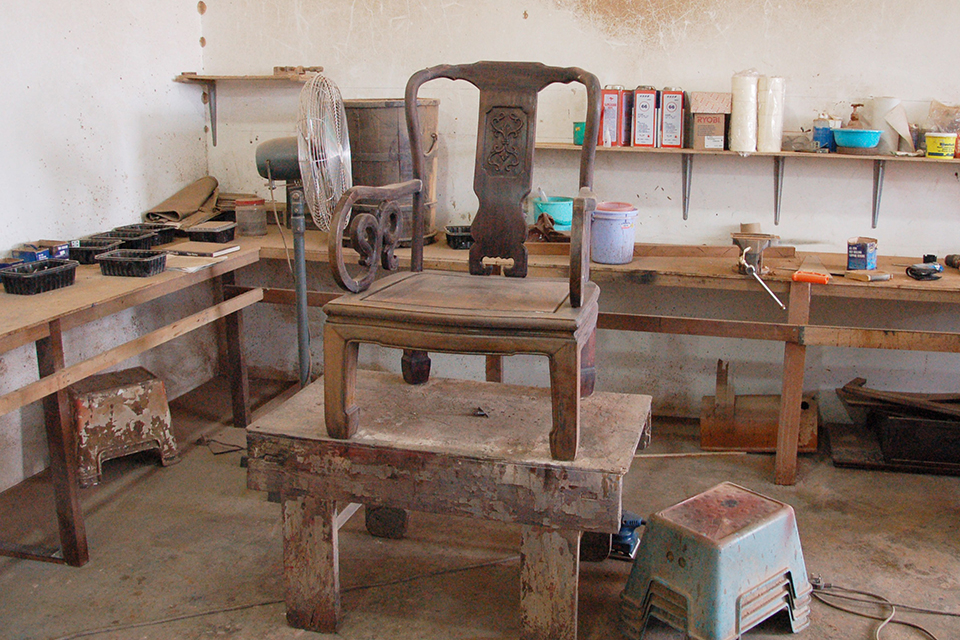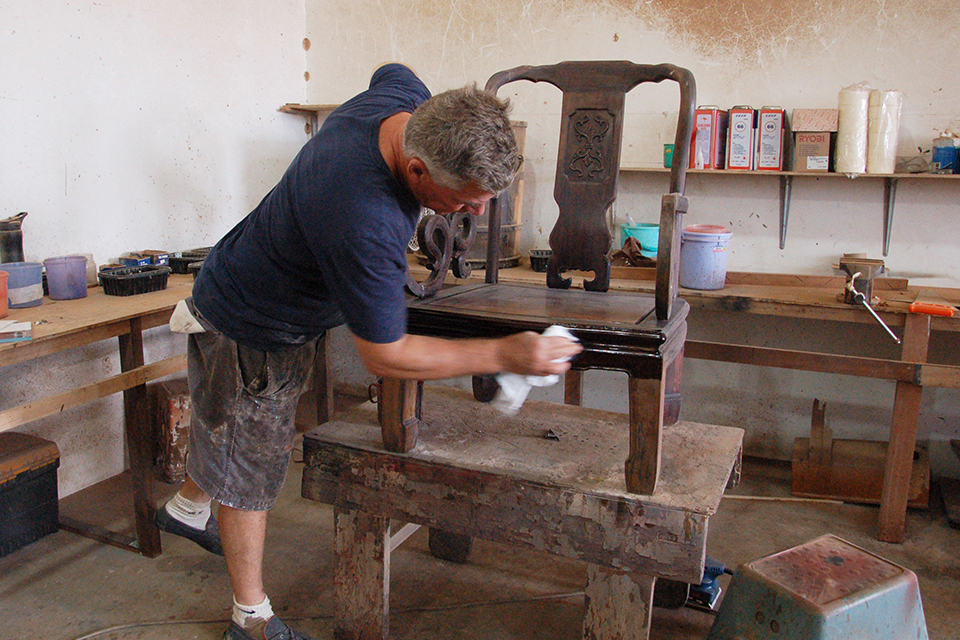For a better viewing experience, visit our Exposure.
These Singaporeans are in the business of preserving, restoring or selling pieces of our past.
The UrbanWire finds out why they’re in love with what they do.
Katong Antique House: A Cultural Haven
Fourth-generation Peranakan [Straits-born Chinese] Peter Wee’s 2-story shophouse in Tanjong Katong is filled with fixtures and heirlooms that encapsulate his rich heritage.
In his part shop, part museum Katong Antique House, one can find an assortment of delicate porcelain and tingkats [tiffin carriers], mannequins in intricately woven batik kebaya [a traditional dress-blouse worn by women in South-east Asia], a ceiling full of old lanterns from different Chinese dialect groups, and many other eclectic antiquities.
Mr Wee takes pride in being able to provide this gateway to history.
“There’s a saying: by knowing the past, you understand the present. If you don’t understand the past, you don’t have an identity,” the 70-year-old said, adding that he hopes young Singaporeans will not lose touch with their roots.
The shophouse was first acquired by Mr Wee’s great-grandfather. It still houses some of the Wee family’s personal items, such as their family portraits (see picture above). Mr Wee said he does not make special efforts in conserving these personal effects. To him, these items should “be subjected to wear and tear, just like people”.
The president of The Peranakan Association Singapore said he’s likely to be the last owner of Katong Antique House. After his passing, the collections in the property will be split up.
ANTIQUES OF THE ORIENT: MAPPING HISTORY
At Antiques of the Orient in Tanglin Shopping Centre, antiquarian nautical maps printed on cotton papers fill the walls from corner to corner. Many rare maps from the past centuries are also carefully framed and stored in the shop’s gallery and office.
Preserving these old maps require a huge investment of efforts, said Mdm Julie Yeo, owner of the shop.
“The paper is cleaned and dried before being framed,” the 65-year-old said. “We use acid-free tape and UV protective glass so that the colors do not run.”
The map in the picture above, for example, depicts Sumatra, Indonesia, in the 18th century.
“Very few maps survive to this day as they are working papers, and usually get damaged and thrown out,” Mdm Yeo added.
While the antiquarian maps fall short on accuracy, they are valuable collectibles for those who’re after their historical and investment values.
“The shapes are all wrong when you look at them,” Mdm Yeo said. “But they were done when the sailors were waiting for the wind to carry them from point to point, sketched and drawn at sea before being engraved and printed on land.
“It has to be very finely done and is a lot of work, which is the reason why I buy and conserve them.”
TONG MERN SERN ANTIQUES: TRASH TO TREASURE
“We buy junk and sell antiques, some fools buy some fools sell.”
These words are found on a yellow banner which greet visitors to Tong Mern Sern Antiques Arts and Crafts, a shophouse at Craig Road.
Its owner is Keng Ah Wong, who lives by the motto “one man’s junk is another man’s treasure”. Over the past 45 years, he’s accumulated a treasure trove of collectibles from gramophones to cameras, sculptures, bicycles and many others. These items mainly came from karung guni men [rag-and-bone men who go door-to-door to collected unwanted household items] and other visitors to his 3-story shophouse.
Here’s advice to those who are interested in building their own antique collections.
“You cannot ask ‘how old is that’ in an antique shop. The owner could just tell you something made yesterday is 100 years old,” Mr Keng said. “It (the question) shows you don’t know what you are buying.
“To buy something expensive, you must really study (the antique in question).”
BAROSSA FURNISHINGS: PASSION FOR THE PAST
Restoring antique furniture is backbreaking work. Nails and screws are generally disallowed during the repair to retain the pieces’ authentic appearance.
A company that specializes in antique restoration is Barossa Furnishings. Its owner David Ditcham, 59, has a soft spot for antiques, especially those from Europe and China.
“Singapore furniture generally goes back 60 years,” said Mr Ditcham. “It’s considered ‘vintage’ only when compared with antique European and Chinese (furniture).”
Mr Ditcham has shipped in European and Chinese furniture dating back to the 19th century for restoration in his shop.
The Chinese rosewood chair in the picture above, for example, is from the 1900s.
“(It’s owned by) an old man, who had it forever in his family,” said Mr Ditcham. “The job was initially to repair only the chair’s joints, but I told the owner, ‘I like the chair, so I will restore it for you for free.’”
Mr Ditcham noted that restoration is very much done only by people who like antiques. A collector himself, he said he’s in a “very interesting” business, but it’s also one that is “time-consuming and hardly makes money”.
“It’s a passion business – I do it because I like doing it, and people like what I do.”

